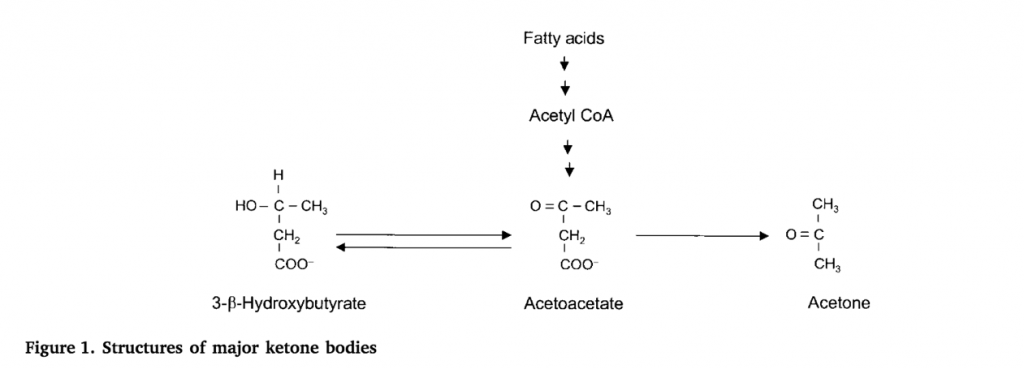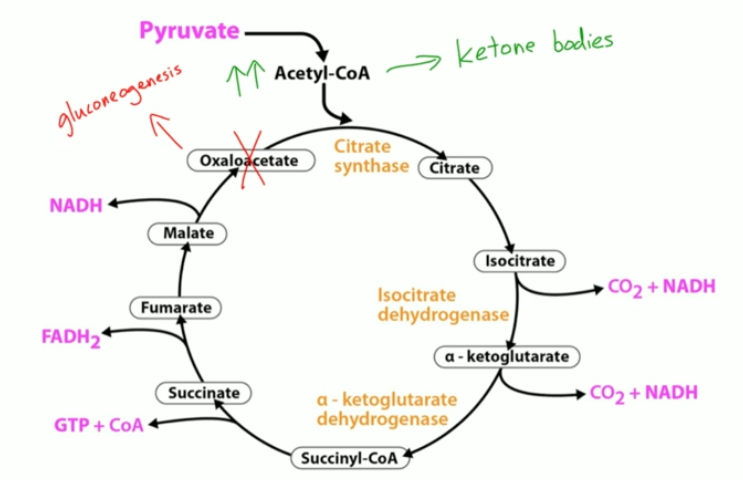Pv / 18B17: Describe ketone bodies including their synthesis and metabolism
18B17: Exam Report
Describe ketone bodies including their synthesis and metabolism.
35% of candidates passed this question.
Whilst most candidates understood that ketones provided an alternative source of substrate for energy production, many lacked a basic understanding of their synthesis and metabolism. Important facts included what ketone bodies are, where they were synthesised, where they were taken up and used as fuel, under what circumstances they are used and the integral role of insulin. Many candidates accurately reproduced the glycolytic and/or the TCA cycle, but this was not being examined, and did not score additional marks. Many candidates incorrectly stated that ketone production was the result of anaerobic metabolism.
Pv / 18B17: Describe ketone bodies including their synthesis and metabolism
Ketone level = <0.6mmol/L
Production
- Basal ketone production is normal
- Formation increases during starvation
- Primary substrate for the brain is glucose
- Unlike other tissues, brain cannot use FA bc cannot cross BBB
- Brain uses a-acids or ketones for fuel (but ketone production spares protein catabolism)
Metabolism
Ketogenesis
- Occurs in mitoch of hepatocytes
- To enter Krebs, AcetylCoA needs to condense with Oxaloacetate
- Oxaloacetate is produced from from pyruvate during glycolysis
- If glucose levels become too low, then oxaloacetate is preferentially used for gluconeogenesis instead of condensing w AcetylCoA
- XS AcetylCoA accumulates
- AcetylCoA then diverted to ketone body formation
AT releases FAs
- stimulated by Adr & Glucagon (wh releases Hormone Sensitive Lipase)
- inhibited by Insulin
In Hepatocytes:
- b-oxidation of FA to AcetylCoA
- Formation of Acetoacetyl CoA
- Conversion to HMGCoA
- Then to Acetoacetate
- Which may be reduced to form 3HB
Ketolysis
Ketone bodies being converted into energy used to fuel intracellular metabolic activities
Ketones are water soluble and can cross BBB
Occurs in mitoch of many extrahepatic organs
Ketone bodies are converted back into AcetylCoA, which enters Krebs:
- B-hydroxybutarate is converted to acetoacetate
- Oxidation of acetoacetate is by ‘succinulCoA-acetoacetate CoA transferase’ – this is absent in the liver, so liver cannot use ketone bodies
- After a few days of starvation the brain increases the [transferase] enzyme to be able to use more ketones
Handling XS Ketones
Hyperketonaemia is ketones > 1mmol/L
Acetoacetate and 3HB are strong organic acids and dissociate fully at physiological pH
[H+]
Acetone also increases but it does not dissociate, it is highly fat soluble and excreted slowly via lungs (aromatic smell of DKA patients)
Ketones are freely filtered and reabsorbed by the kidney
With large hydrogen load normal buffering capacity is overwhelmed and high AG Metabolic Acidosis ensues
- Author: Krisoula Zahariou

